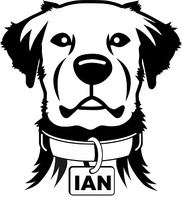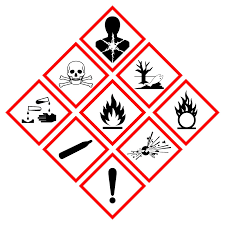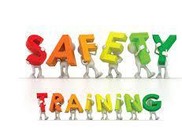|
Welcome to Safety Watch, the new bi-monthly Health and Safety newsletter. Here you will find the latest news, information and advice relating to a wide range of Health and Safety related topics.

A new system update will soon be going live to further improve the Accident, Incident and Near miss reporting system (IAN). The new update will make it possible for managers to save incident reports and allow the reports to be completed at a later date, once all the facts have been gathered. The update will also include a new actioning tool which will allow managers to assign and track actions to help prevent similar incidents from happening again.
Further work is ongoing to develop a a manager’s dash board to give them an overview of incidents within their service area. Once ready managers will receive a link to access the reports along with guidance on how to use them.
Managers that have not already completed the IAN system training can book themselves onto the next training session via resource link.
|

The Control of Substances Hazardous to Health (COSHH) Regulations apply to nearly every workplace. Because most businesses use hazardous substances in one form or another. From mild irritants to high-risk chemicals, COSHH covers many everyday substances like cleaning solutions, paints and inks, to trade materials like cement and wood dust.
The COSHH regulations were first introduced over 30 years ago. Their purpose? To protect employees and others from harmful exposure to hazardous substances. So many of the substances we use in our jobs can be dangerous if used incorrectly.
Many can damage the skin, and some can cause serious long-term damage to the lungs. The effect can be immediate, such as dizziness or stinging eyes, or can take many years to develop, such as lung disease. Many of the long-term or chronic effects cannot be cured once they develop.
Where substances that depict any of the COSHH hazardous symbols used a COSHH risk assessment must be undertaken. The purpose of the assessment is to help managers and staff identify the various hazards, assess the risk while using, transporting and storing the substances and to put in controls to reduce the risk (such as training, safe systems and PPE). Once complete it is essential that these assessments are shared with the people who may come into contact with the hazardous substance and that they are reviewed regularly.
|
New COSHH assessment system
As part of the project to replace Alcumus, the Health and Safety Team has been working closely with the Digital Delivery and Systems teams to develop a new system for completing COSHH assessments.
The new system has simplified the process of completing assessments for hazardous substances, while ensuring that all risks are adequately assessed.
In addition to accessing the system, you will find relevant information on hazardous substances, responsibilities for managing the risks arising from the use and storage of hazardous substances, guidance and a step-by-step procedure on how to use the new system.

Managers - have you identified which groups or employees are classed as loner workers in your service areas or teams? Lone working can be defined as any situation, or location, in which someone works without close or direct supervision; without a colleague nearby or is out of sight or earshot of another colleague. Even staff who work in a building with others may be considered lone workers. Home workers are also considered lone workers There will always be greater risks for lone workers without direct supervision or anyone to help them if things go wrong.
|
Keeping lone workers safe
Policy - Coventry City Council has a robust lone working policy to inform lone workers and managers about the arrangements that are in place to protect employees when they are working alone.
Risk assessment - A lone working risk assessment will help identify the risks relating to working alone and list suitable control measures to help keep workers safe.
Training - Part of the risk assessment process is to identify employee training needs. Training can take many different forms, ranging from virtual courses completed online to practising emergency action plans.
Monitoring and Keeping in Touch – Having effective lines of communication to ensure you know where the lone workers are and that they are safe.
 |
|
Health and Safety is always at the forefront of everything within the City Council. Unfortunately, not all employers have the same commitment to workplace safety which can result in the Health and Safety Executive taking enforcement action against them. However, this gives us the opportunity to learn from their mistakes and make sure we are doing everything possible to keep people safe. |
Builder avoids immediate prison sentence after failing to protect workers - 7 August 2024
A builder has been given a suspended prison sentence after he put the lives of workers at risk on a construction site in London.
David Beadle, trading as Beadle the Builders, failed to comply with a prohibition notice issued by the Health and Safety Executive (HSE) in relation to unsafe working at height at the site on Woodyates Road in South East London. He was given a 26-week custodial sentence, suspended for 12 months and was told to complete 150 hours of unpaid work
Key learning points
Working at height remains one of the biggest causes of fatalities and major injuries in the UK. Most incidents arise from poor planning of the works, or a belief that the job will only take a few seconds which can lead to complacency. The reality is any work which takes place above ground/floor level, no matter the height, carries with it increased risk. To keep safe we must;
-
Make sure the work is properly planned from start to finish and that the hazards and risks are assessed and adequate control measures are in place to: -
- protect employees from a fall from height by eliminating the hazards and risks from working at height e.g. conducting work without the need to work at height
-
Or provide a safe place to work or adequate work equipment to conduct working at height in a safe way
-
Supervise work at height to make sure it is being carried out safely and in accordance with the work plan
-
Ensure only trained and competent people undertake work at height.
-
Make sure the right type of equipment for working at height is being used.
 |
|
The Health and Safety Team deliver several courses throughout the year designed to equip managers with the knowledge they need to comply with their legal responsibilities. These courses focus on providing practical advice which is easily relatable to the way you work and will help reduce incidents and accidents within your service area. |
October 2024:
Risk Assessment: 9 October
Fire Marshal: 10 October
Incident Investigation: 17 October
November 2024:
Incident, Accident and Near Miss Reporting system (IAN): 4 November
Incident Investigation: 18 November
Fire Risk Assessment: 25 November
Telephone: 024 7683 3285
Email: ohsw@coventry.gov.uk
|